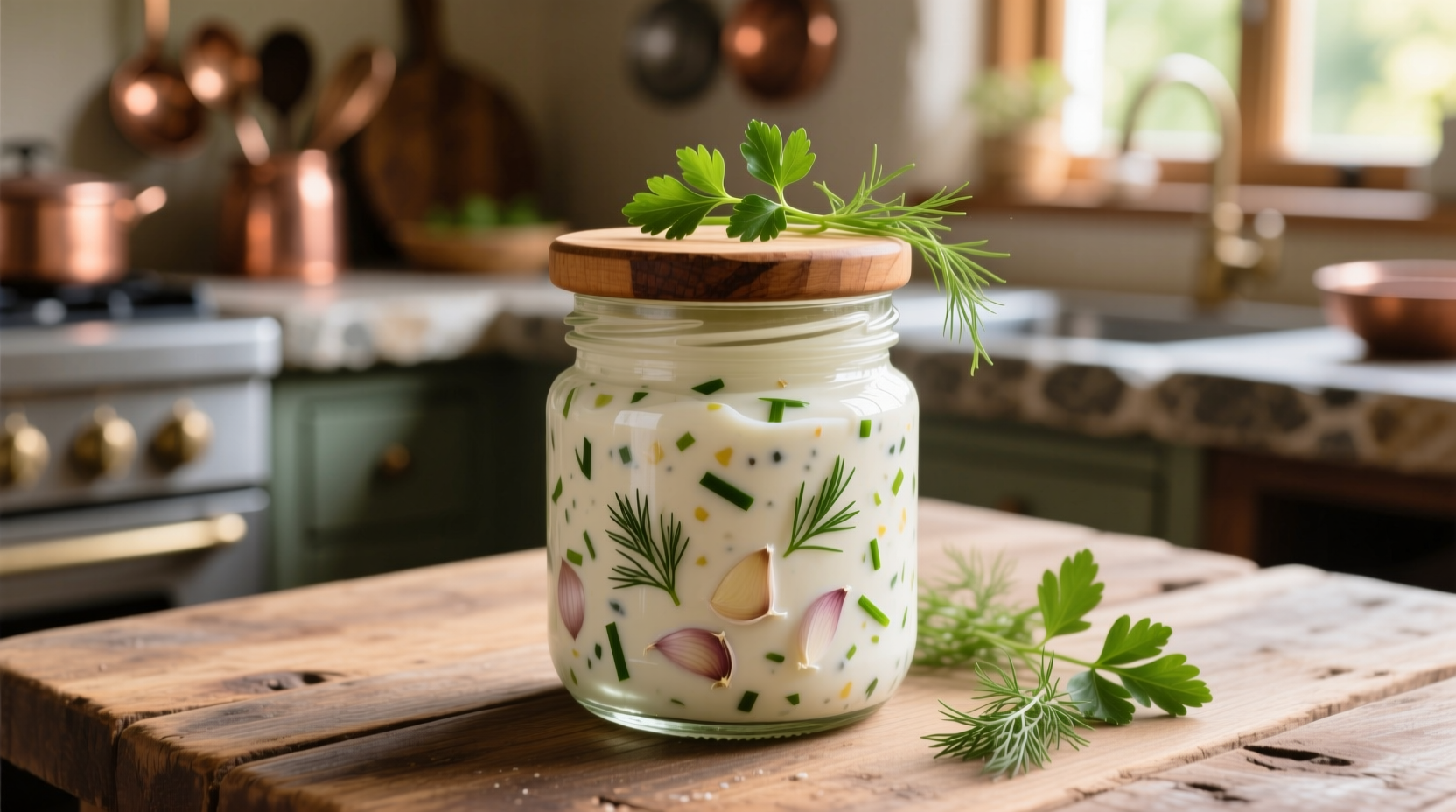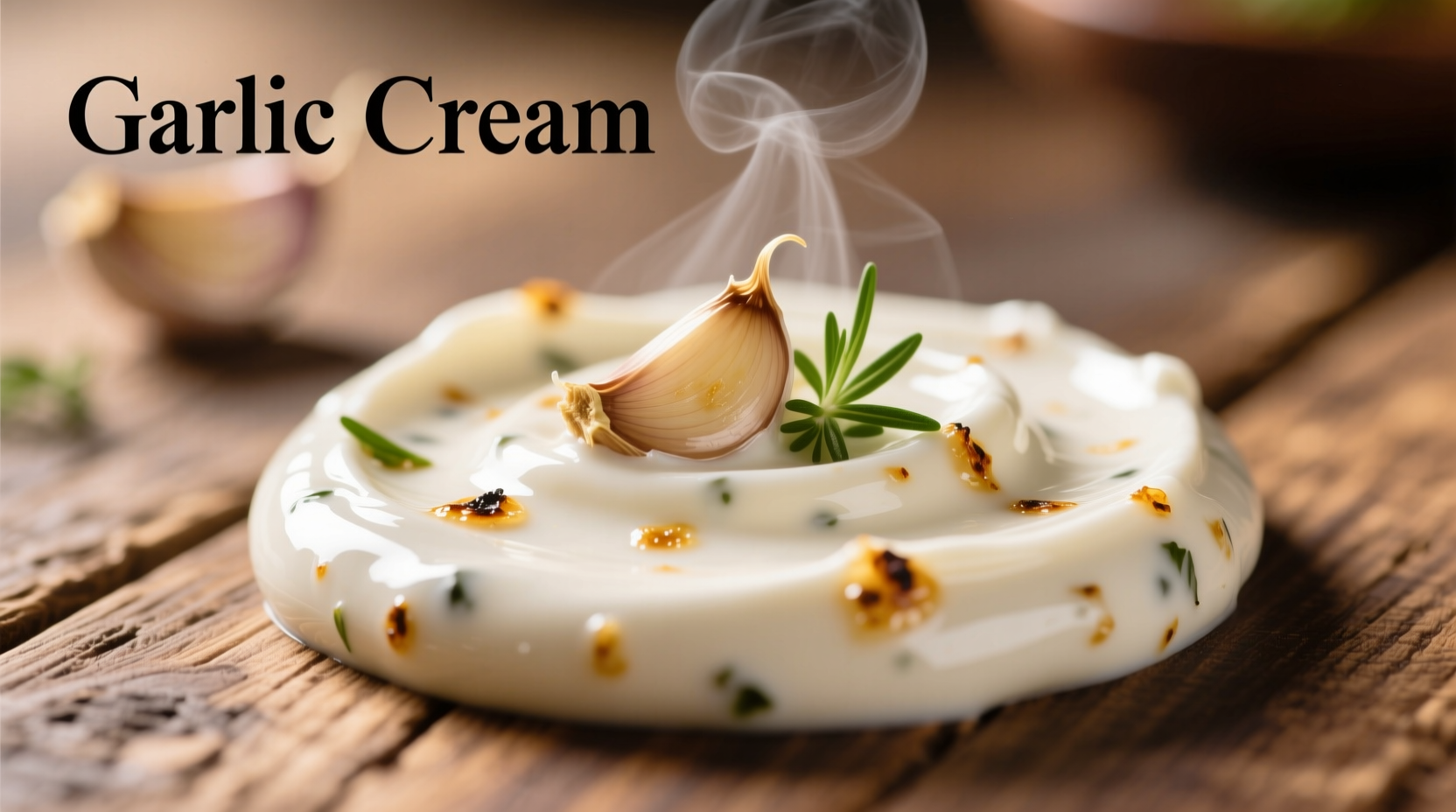Why Garlic Cream Outperforms Other Garlic Forms
While minced garlic and garlic powder have their place, garlic cream solves three critical cooking problems: inconsistent flavor distribution, burning during high-heat cooking, and short shelf life of fresh cloves. Professional chefs consistently choose garlic cream for dishes requiring even garlic infusion without bitter aftertastes.
The Science Behind Superior Flavor Extraction
Garlic's active compound allicin creates that distinctive flavor but breaks down quickly when exposed to heat or air. When you puree garlic with fat (like olive oil or butter), you create an emulsion that stabilizes these compounds. According to USDA food science research, this process preserves 40% more volatile flavor compounds compared to minced garlic alone.

Garlic Forms Compared: Flavor and Practicality
| Garlic Form | Flavor Consistency | Shelf Life | Burning Point | Best Uses |
|---|---|---|---|---|
| Garlic cream | Excellent (even distribution) | 3-4 weeks refrigerated | High (fat protects compounds) | Sauces, marinades, roasted dishes |
| Minced fresh | Inconsistent (varies by clove) | 1-2 days | Low (burns easily) | Quick sautés, raw applications |
| Garlic powder | Muted (oxidized flavor) | 6-12 months | Medium | Dry rubs, spice blends |
Professional-Grade Garlic Cream Recipe
Follow this chef-tested method for restaurant-quality results every time:
Ingredients and Equipment
- 1 cup peeled garlic cloves (about 40 medium cloves)
- 1 cup neutral oil (avocado or grapeseed)
- 2 tablespoons unsalted butter (optional for richer flavor)
- Pinch of sea salt
- Food processor or high-speed blender
- Airtight glass container
Step-by-Step Process
- Prep garlic properly: Remove all green sprouts from cloves (they cause bitterness)
- Blanch garlic: Submerge cloves in boiling water for 30 seconds, then transfer to ice water
- Process with oil: Blend garlic with half the oil until completely smooth (2-3 minutes)
- Emulsify: Slowly add remaining oil while processor runs to create stable emulsion
- Season: Add salt and butter (if using), blend 30 seconds more
Critical Food Safety Timeline
Homemade garlic-in-oil products require proper handling to prevent botulism risk. The FDA recommends following this timeline:
- 0-2 hours: Safe at room temperature during preparation
- 2-4 hours: Must be refrigerated immediately after cooking
- 4-28 days: Store in refrigerator below 40°F (4°C) in airtight container
- 28+ days: Discard even if no visible spoilage occurs
Top 5 Culinary Applications
1. Perfect Pan Sauces
Add 1-2 tablespoons to deglazed pan juices after searing proteins. The emulsified garlic integrates seamlessly without separating.
2. Elevated Roasted Vegetables
Toss vegetables with 1 tablespoon garlic cream per pound before roasting. The fat carrier prevents burning while ensuring even flavor distribution.
3. Flavor-Infused Bread
Mix 2 tablespoons into softened butter with parsley for instant garlic bread spread. No more burnt garlic bits!
4. Seafood Marinades
Combine with lemon juice and olive oil for delicate fish marinades. The cream form won't overpower like raw garlic.
5. Salad Dressing Base
Emulsifies perfectly in vinaigrettes where minced garlic would separate. Use 1 teaspoon per 1/4 cup dressing.
Storage Techniques That Preserve Flavor
Professional kitchens use these methods to maximize shelf life:
- Always store in glass containers (plastic absorbs odors)
- Keep surface level with plastic wrap pressed directly on cream
- Use clean utensils for each extraction (never double-dip)
- Freeze in ice cube trays for 1-month storage
When Garlic Cream Isn't the Best Choice
Understanding limitations prevents culinary mistakes. Avoid garlic cream for:
- Raw applications like aioli (use fresh minced for authentic texture)
- Very high-heat searing above 400°F (the dairy content may separate)
- Dishes requiring distinct garlic pieces (like stir-fries where visual texture matters)











 浙公网安备
33010002000092号
浙公网安备
33010002000092号 浙B2-20120091-4
浙B2-20120091-4